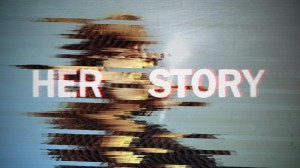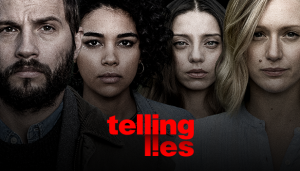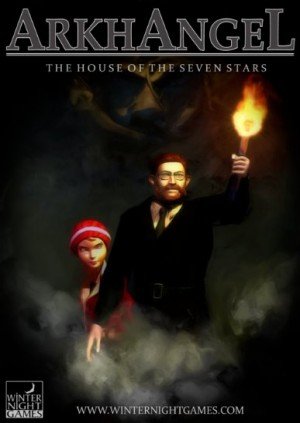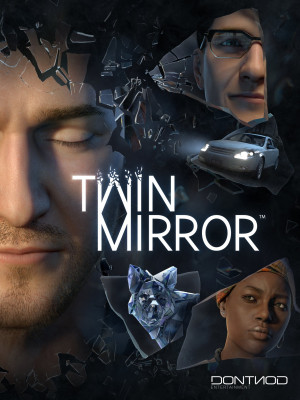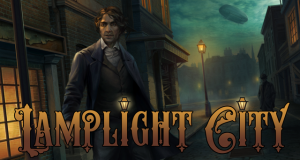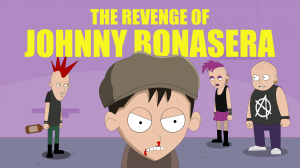Sam Barlow (Her Story, Telling Lies) – Part 2 interview - page 3
Ingmar: You’ve mentioned Zelda a couple of times, but when it comes to storytelling in games in general, which ones have particularly impressed you throughout the last few years?
Sam: Of the few that I’ve allowed myself to play – ’cause the act of making an independent video game is to do that at the exclusion of all other fun – I continue to be a huge fan of Kentucky Route Zero. Some of the bits and pieces they do… there’s a bit in, I think it’s Act Two where your characters visit this museum, but you’re seeing it from the perspective of the people you spoke to being interviewed at a later date about what they said to you. And the dialogue choices that you get, the traditional kind of choice-based story happening through the voices of these characters in the future… it creates so many interesting layers, raising the question of who’s the protagonist? What does it mean to be an interactive audience member? Are you role-playing the character? I’m fascinated by those kinds of questions. And I think they do some wonderful things in Kentucky Route Zero, as well as it being beautiful in terms of atmosphere and visuals.
 |
inkle's Heaven's Vault is one of the newer games whose ambitious storytelling elements are largely unheralded |
I just started playing Heaven’s Vault, which has some rough edges but there’s a humbleness to what inkle does, ’cause they’re doing stuff that is so much more ambitious and so much further along in terms of this idea of using procedural, systemic elements to kind of rearrange a story and shuffle it around what you’re doing. They’re doing that so much more than anyone else is. And I think to some extent people don’t necessarily realize it. You know, if this was EA making this game you would’ve watched a hundred hours of promo videos explaining how clever the story system was.
Ingmar: (laughs) Right.
Sam: And they don’t do that. So it’s easy to miss in some ways. It’s such a specific thing, which I love. Like, it makes no concessions. I mean, it is the love child of the Westwood Blade Runner game and The Last Express.
Ingmar: Sounds good!
Sam: It has a unique visual style. It’s a detective story which kind of auto-shuffles itself. And the world it’s set in is this curious, very analogue kind of future. It has a lot of Gene Wolfe-type stuff in there about these kinds of civilisations on top of other civilisations. Super, incredibly ambitious.
I obviously loved [The Return of the] Obra Dinn, not necessarily as a piece of storytelling in the way that I would define a story, but speaking as someone that’s thought about what mechanics can you build around the idea of being a detective? It was super-interesting to see them solve that question in a different way by having each individual murder be very simple. Multiple choice questions, essentially, but we’re going to have a hundred murders. And that’s where the richness comes from. And I really admired the way they solved the content problem. Having these elaborate freeze frames I thought was really beautiful with the voice-over, ’cause they were very detailed and interesting and dramatic. I thought it was a more artful compromise than, say, Everybody’s Gone to the Rapture, where you would have ghostly bodies acting out entire scenes. Having the specificity of those frozen dioramas was super-cool, and it’s a fantastic constraint to try to tell a story around that.
 |
Lucas Pope's Return of the Obra Dinn is another modern adventure with a novel approach to mystery investigation
|
And then for the developer to basically execute on every possible variation within those constraints. Lucas [Pope, developer] was probably essentially going, "well, how many ways can people die? And how many ways can I identify them through their accent, their clothing, their belt buckles, their tattoos, their uniforms, where they are physically on a ship, and how detailed do you go on thinking about life on board a ship and stuff?" That for me is one of the things that’s only possible in independent games, because no one is going to allow you to spend five years as he did being obsessive about those details in a way that you can if you’re only answering to yourself. Similarly in Telling Lies, there are very strange, specific things and I’ve gone very deep and been very indulgent in directions that I think if I was answerable to a more conventional higher power it would be hard to justify.
Ingmar: Not that long ago, Eko, an interactive storytelling platform, released WarGames, which was a project that you did for them. It seems more like a traditional interactive movie than in comparison to something that is rather, let’s say, gamey or mechanical. Can you tell me a bit about WarGames and your involvement with Eko?
Sam: That project kind of morphed at several points along the way. But originally it was going to be one of several shows, and it was definitely conceived of as a show. Like that whole question of calling something a game or a show or a movie or whatever, I was quite happy to call it a show because ultimately if you sat and did nothing the show would happen. Whereas something like Her Story, nothing happens unless the player interacts, right? It requires a constant interaction, it requires a constant feedback loop.
I was interested in getting into that because the idea of a choose your own adventure or a traditional choice-based thing is something I’ve never gelled with. I just wrestled with that idea of the protagonist and what does it mean to make choices on their behalf. When I did some of Shattered Memories, I had this idea where all the story branches and all the dynamic story content was kind of hidden from the player. There weren’t these overt choices that you would get like in a BioWare game or a Telltale game, which for me was an interesting take on it. So WarGames was an attempt to do that for a very mainstream audience.
It was an interesting project. It was challenging for me to not write it personally, as we had someone else come in and write it, which is definitely the case of when you’re in this kind of interactive world, you really want the writer to be someone that is super-immersed in exactly how the mechanics of the thing works. My background, and I think we’re seeing with Netflix and stuff, oftentimes you will have a linear writer creating something and then have some steering coming from someone with more interactive experience. But I definitely feel more comfortable when I’m directly writing it.
It was fun, but I think it didn’t necessarily find its audience. It was conceived of as a genuine reboot of the movie in the way that the original movie was aimed at teenaged boys who were obsessed with hacking and was a pretty cool piece of wish fulfillment-slash-Cold War drama for that particular person. We really wanted to make something that was aimed at a modern set of kids that were interested in that. We wanted to show a colourful representation of the modern hacking world, which is not as is often portrayed on TV. It was conceived of as a pilot, so then the idea of breaking it down and it being a show and being several small episodes was something that came kind of late in the date. I think structurally it works far better if you just sit and are immersed in it for a couple of hours, versus seeing it as a piece of episodic narrative. But it was a very useful project in terms of thinking out some of the ideas behind Telling Lies, as well as getting my head around how to shoot this thing and some of the research into what digital communication has done to people’s lives.
Continued on the next page...




